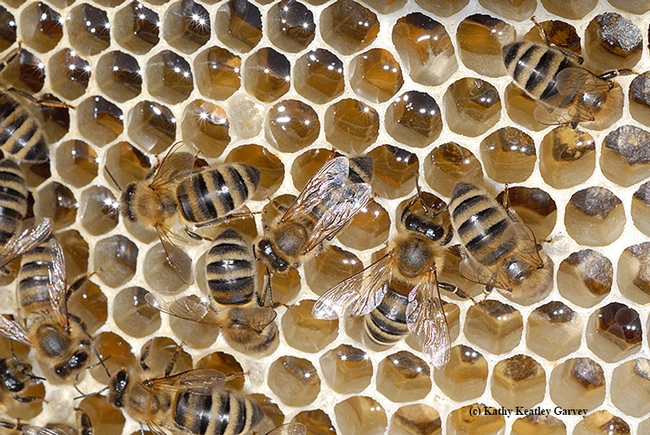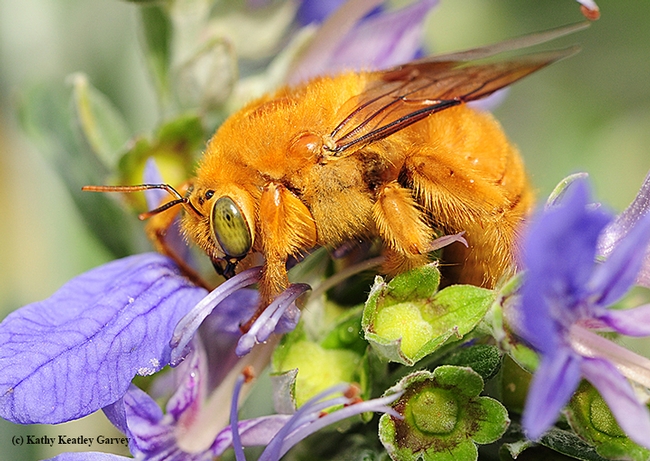If you've ever wanted to taste exotic honeys (of course, you have!) and if you've ever wondered why native bees don't make honey (you have, haven't you?), then you're in luck.
The Honey and Pollination Center at the University of California, Davis, is hosting an international honey tasting event on Tuesday, April 5 in the Robert Mondavi Institute for Wine and Food Science (RMI) Sensory Theater, and you're invited.
The event, billed as The World of Honey--International Honey Tasting, will take place from 6:30 to 8 p.m. at RMI, located on Old Davis Road, UC Davis campus.
Participants will experience four exotic international honeys: stingless bee honey from Brazil, coffee blossom from Guatemala, Viper's Bugloss from New Zealand, and chestnut honey from France.
Amina Harris, director of the Honey and Pollination Center, will lead the tasting. The event opens with a short talk and PowerPoint on stingless bees and native bees by Robbin Thorp, distinguished emeritus professor, UC Davis Department of Entomology and Nematology.
"Stingless bees were raised by the Mayans for honey," Harris says. "Today stingless bee honey production is very low."
In his talk,Thorp will discuss the diversity of bees (20,000 species in the world) and why most bees do not produce honey. He also will cover "which ones produce honey that we do harvest, primarily bees of the genus Apis and some of the many stingless bees."
Student tickets are $12.50, while tickets for UC Davis affiliates are $25, and $30 for the general public. To registrar, access the Honey and Pollination Center website at https://registration.ucdavis.edu/Item/Details/190 or contact Elizabeth Luu at luu@caes.ucdavis.edu or Amina Harris at aharris@ucdavis.edu. The last day to register online is Sunday, April 3.
Attached Images:

Why do honey bees (Apis mellifera) make honey and not most other bees? That question will be answered at the Honey and Pollination Center's "World of Honey" tasting event on April 5. (Photo by Kathy Keatley Garvey)

The male Valley carpenter bee (Xylocopa varipuncta) is the color of honey, but this species does not make honey. Although the male is blond, the female of this species is a solid black. (Photo by Kathy Keatley Garvey)